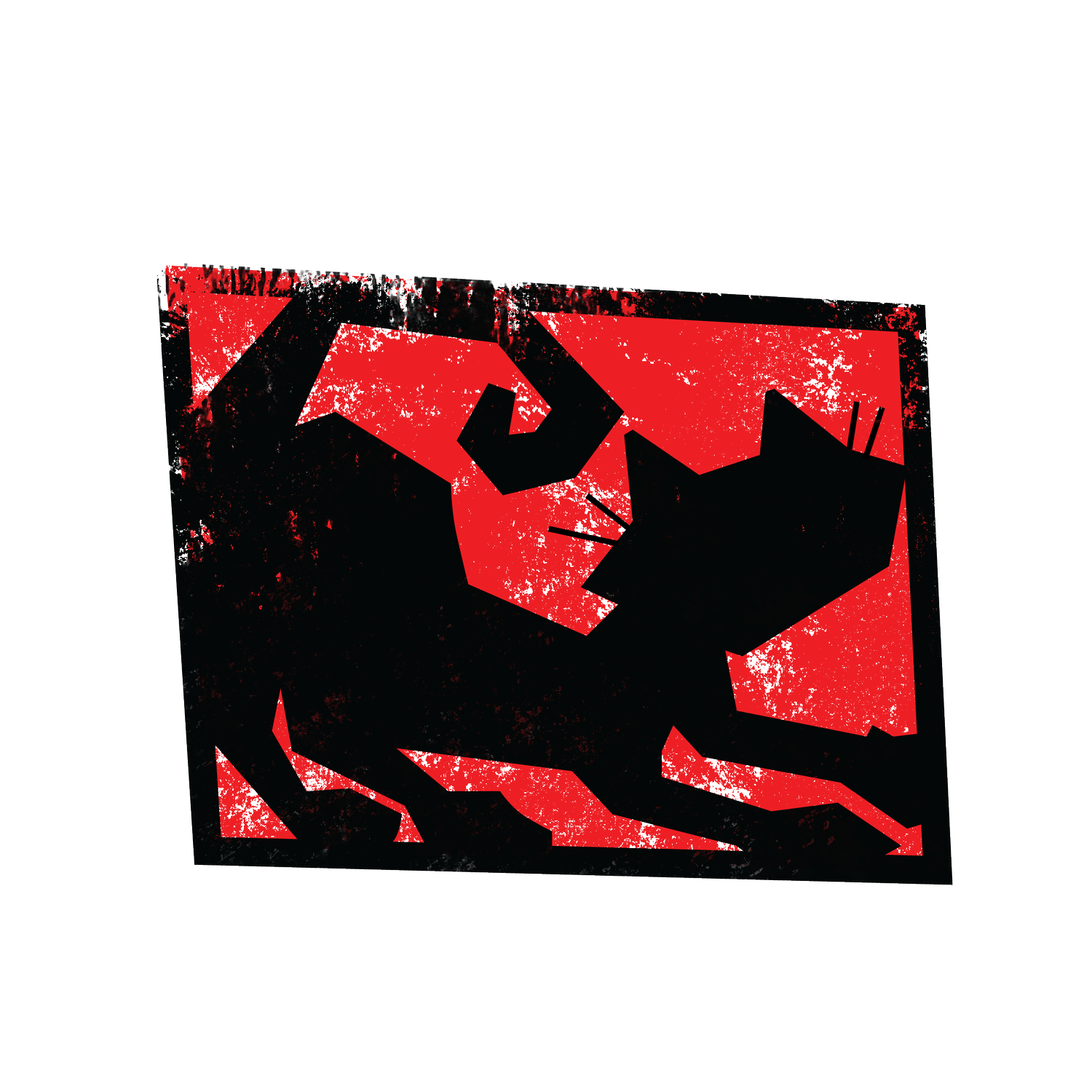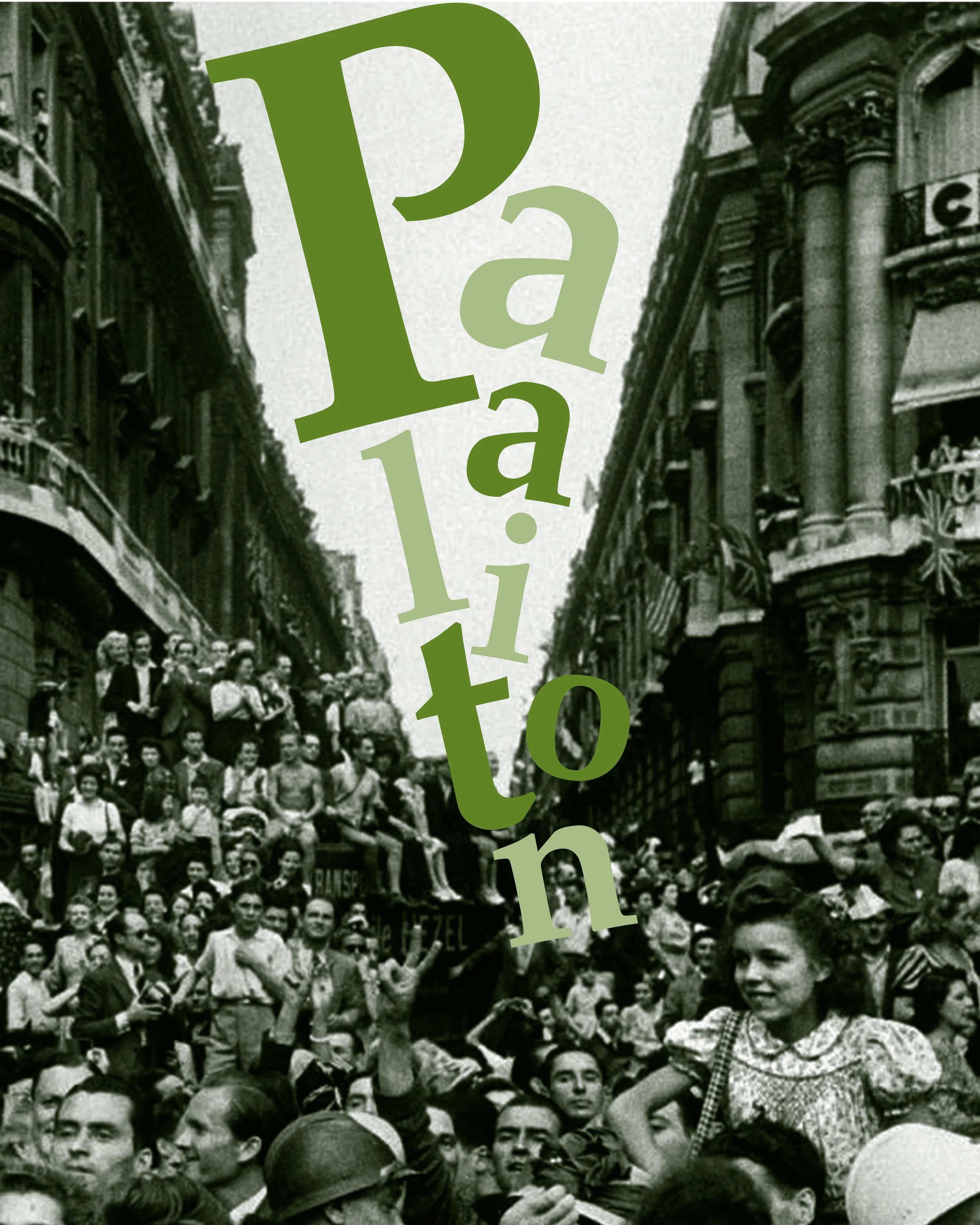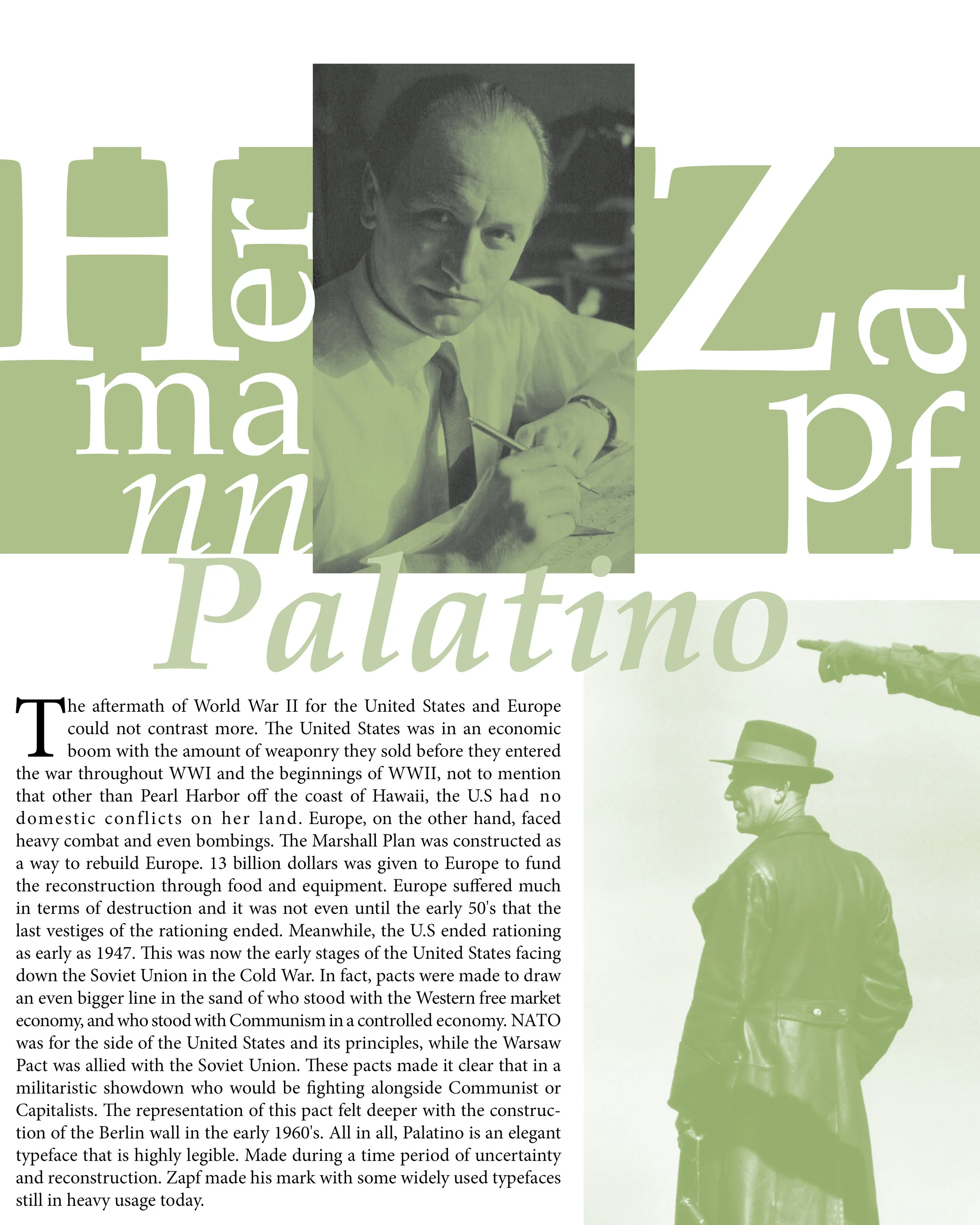Palatino
font book
This booklet was a class college project all about the typeface Palatino. Designed in post World War II by Herman Zapf. Given that it was made in post-Germany as a means to have an incredibly legible typeface for notices, Zapf made the font in tandem with one of the biggest economic downturns faced in Germany. Ironically, as the world celebrated liberation.
My Task
The main focus of the project was to showcase Palatino, its history and its designer. However, I was pigeon held to many parameters throughout this project that I had to use in my design. First, I could only use Palatino throughout. Second, two images on each page, except for the cover, were required. I also had to showcase the entire alphabet, uppercase and lowercase, and show the numbers 0-9. In addition, I had a word count of 20,000 words per page. Last, I had an extremely limited color palette to work with by using only duotone colors.
Results
The energy of post World War II is well documented in the United States as a victorious time with the men gone from war coming home to an economic boom and a baby boom. However, for Europe it was a different sort of celebration. Many cities were liberated, however, all of them had to reconstruct physically as well as politically. Europe was not doing very well. Especially Germany. The over is an image of Paris finally liberated. I used this as the cover to capture the sentiment at the time. However, on the inside pages I exclusively used images of post-WWII Germany. One prominent photographer taken these images was René Burri. Not only were the images beautiful, they also had to so much space in them that made them have a lonely feel but also that could easily be filled with letters which was the goal of the project. The challenge of making all this look interesting was tough since I had such a small color palette. To solve this, I opted for huge lettering that worked in tandem with the images to create really dynamic layouts. The couple standing in the “O” for “Palatino“ for instance or the way the numbers jut into the image of the men in line. Overall, I am very proud of this project as there was a lot of parameters to keep within but I still found a way to create something interesting.




